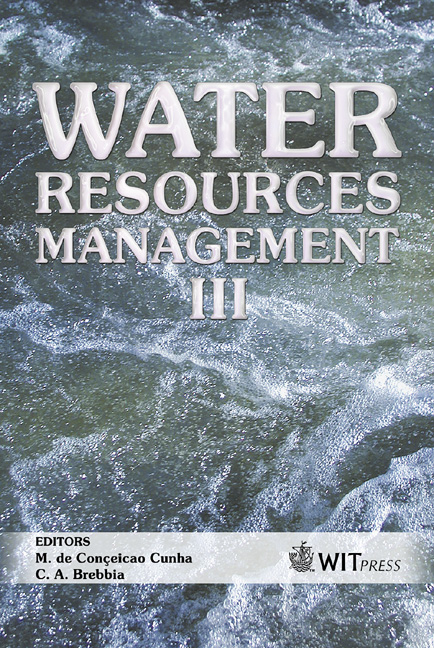Sustained Deficit Irrigation Of Winegrapes In A Semi-arid Horticultural Region Of Australia
Price
Free (open access)
Transaction
Volume
80
Pages
11
Published
2005
Size
426 kb
Paper DOI
10.2495/WRM050551
Copyright
WIT Press
Author(s)
M. Edraki & M. Krstic
Abstract
In the Murray Darling Basin (MDB), the so called \“food bowl” of Australia, there is an increasing need for agricultural and horticultural management practices that use water resources more efficiently. In the Sunraysia region of the MDB, a trial is being conducted on a Shiraz (Vitis vinifera) winegrape to explore the potential for improvements in water use efficiency (WUE), and the impacts on deep drainage by using subsurface drip irrigation with sustained deficit (SD) irrigation treatments. Other objectives include investigating fruit and wine quality under various water deficit levels. The treatments consist of one control (100%) and three deficits being 65, 45 and 34% of the control. In the first irrigation season (2003-2004), irrigations were scheduled on the basis of average soil matric potential of the control treatments. A higher WUE was observed as a result of lower water use in SD treatments, however the control and deficit irrigation treatments in both surface and subsurface irrigations were not statistically different in yield and quality components. The surface and subsurface treatments were not significantly different with respect to WUE and yield components. Strong spatial variation across the experimental site resulted in the vines of the eastern plots experiencing drier conditions throughout the irrigation season compared with vines at the western corner of the site. A range of measures was considered for the second irrigation season to address the impact and extent of observed spatial variability. These included an electromagnetic survey accompanied with soil sampling. An array of piezometers were installed across the site to measure the extent of seepage from the irrigation supply channel. Irrigation scheduling was changed to average of soil matric potential in the drier (eastern) portion of the site to prevent exposure of these soils to extreme stress conditions. The statistical analysis of results has been modified to include an indicator of the spatial variability as a covariance to the analysis. Keywords: deficit irrigation, soil water potential, subsurface irrigation.
Keywords
deficit irrigation, soil water potential, subsurface irrigation.





